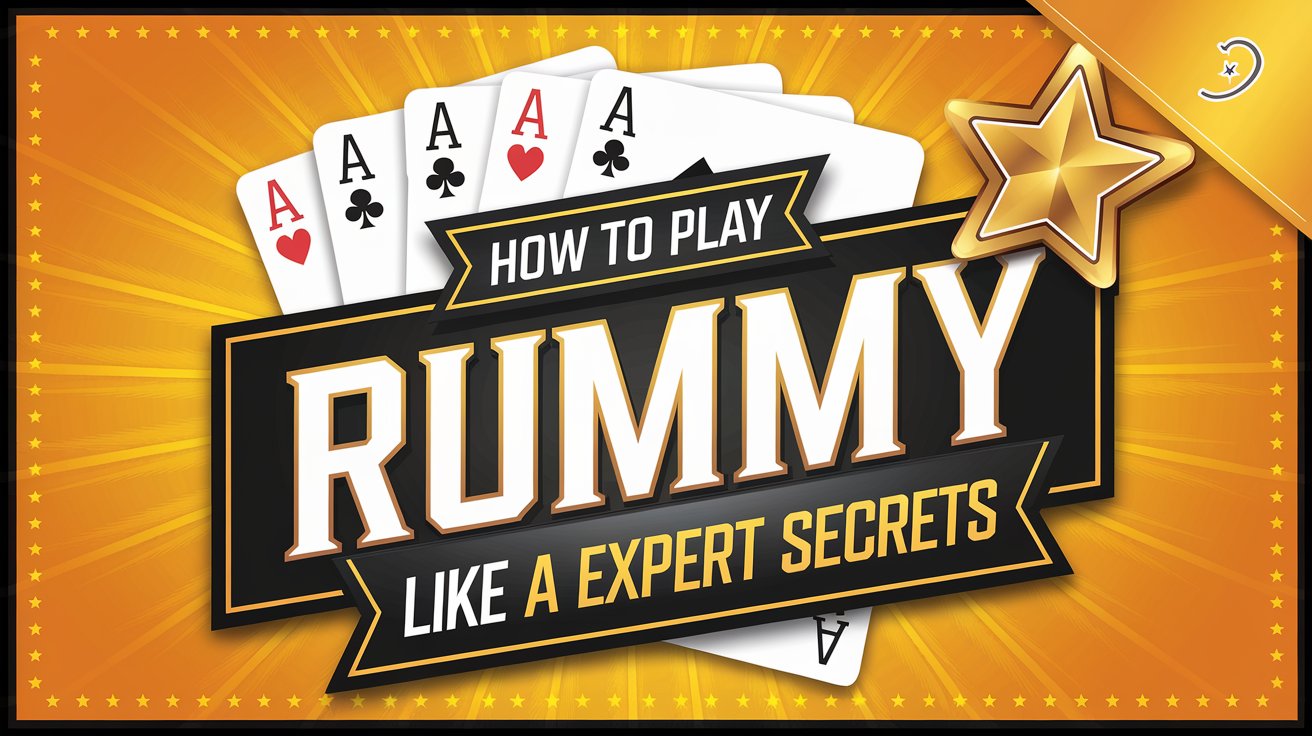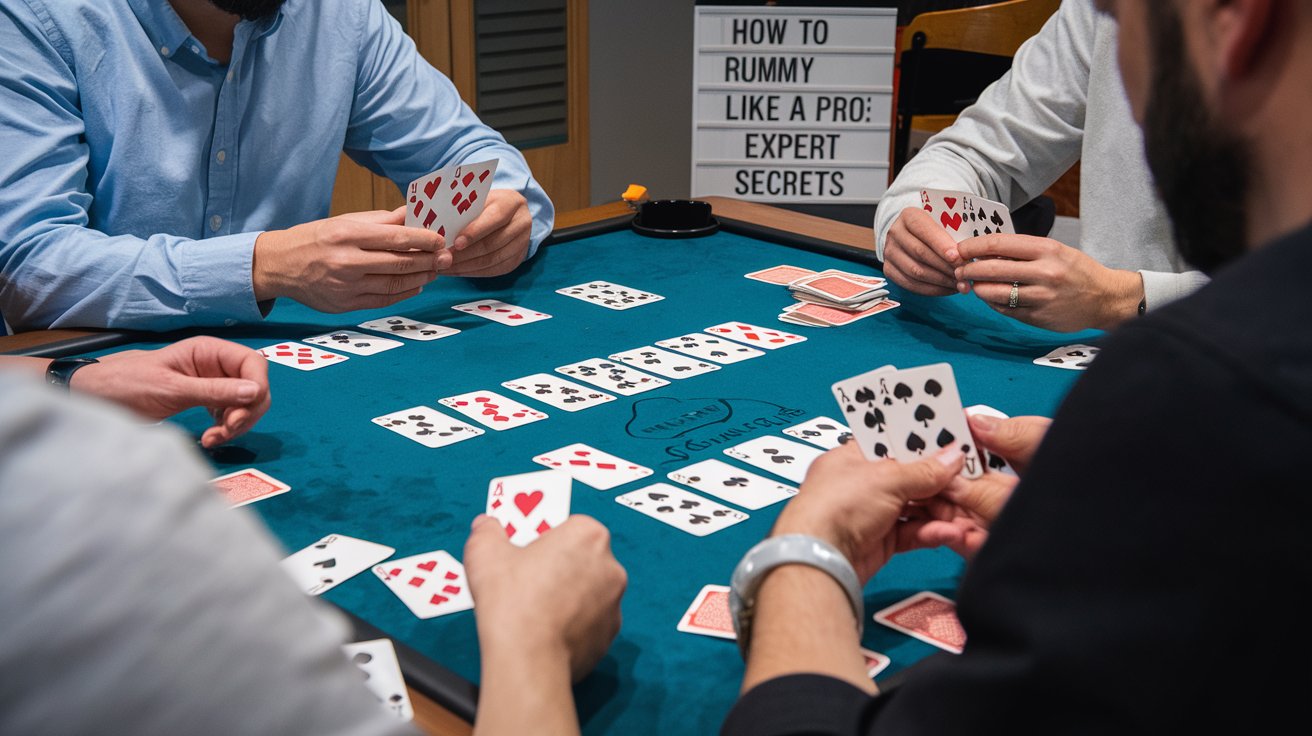Rummy is more than just a card game—it’s a strategic battlefield where skill, observation, and quick thinking determine the winner. Whether you’re a casual player looking to improve or an aspiring Rummy champion, this comprehensive guide will unveil the expert secrets that separate amateur players from true Rummy masters.
From understanding the fundamental rules to mastering advanced techniques, we’ll break down everything you need to know to elevate your Rummy game. Get ready to transform your approach and start winning more consistently!
Understanding the Basics: A Solid Foundation

Before diving into pro-level strategies, it’s crucial to have a rock-solid understanding of Rummy’s core principles. While Rummy has many variations, most share some fundamental objectives:
Core Objectives
- Form valid sets (three or four cards of the same rank)
- Create sequences (three or more consecutive cards of the same suit)
- Minimize points in your hand
- Be the first to declare a winning hand
Essential Rules to Master
- Card Distribution: Typically, players are dealt 13 cards in Indian Rummy or 10 cards in Gin Rummy
- Draw and Discard: Each turn involves drawing a card and discarding one
- Joker Usage: Understand how wild cards and jokers can complete your melds
- Declaring: Know the specific rules for declaring a valid hand in your Rummy variant
Pro Technique #1: Strategic Card Management
Reading Your Initial Hand
Professional Rummy players don’t just look at their cards—they analyze them. When you receive your initial hand, perform a quick mental assessment:
What to Look For:
- Potential sequences
- Incomplete sets
- High-value cards that might become problematic
- Opportunities for quick melds
Pro Tip: Prioritize forming at least one pure sequence (without jokers) early in the game. This is often a requirement in many Rummy variants and provides a solid foundation for your strategy.
The Art of Discarding
Discarding isn’t just about getting rid of unwanted cards—it’s a strategic move that can make or break your game:
Strategic Discard Principles:
- Avoid giving opponents cards they might need
- Discard high-value cards that don’t fit your strategy
- Use discards to mislead opponents about your hand
- Consider the probability of completing potential melds
Pro Technique #2: Psychological Warfare

Reading Your Opponents
Rummy is as much a psychological game as it is about the cards:
Key Observation Techniques:
- Watch which cards opponents pick from the discard pile
- Note their hesitation or quick discards
- Observe their card arrangement and sorting patterns
- Pay attention to their reaction to your discards
Misdirection Strategies
Professional players use subtle techniques to confuse opponents:
- Occasionally pick up seemingly useless cards
- Maintain a consistent pace of play
- Avoid showing excitement or disappointment with your draws
- Create false narratives about your hand through strategic discards
Pro Technique #3: Advanced Probability Management
Calculating Your Chances
Understanding probability is crucial in Rummy. Here’s how pros approach card probability:
Probability Calculation Basics:
- Track cards that have been discarded
- Calculate the likelihood of drawing needed cards
- Understand the diminishing probability of specific draws as the game progresses
Example Calculation: If you need a specific card to complete a sequence and 2 of those 4 cards have already been discarded, your probability of drawing the remaining cards is significantly reduced.
Pro Technique #4: Defensive Playing

Blocking Opponent Strategies
Professional Rummy players don’t just focus on their own hand—they actively work to disrupt opponents’ strategies:
Blocking Techniques:
- Hold onto cards that might complete opponents’ potential melds
- Discard cards that are less likely to be useful to others
- Create “dead zones” in the discard pile
- Understand the flow of potentially useful cards
Variant-Specific Pro Strategies
Indian Rummy Secrets
- Focus on forming two sequences
- Use jokers strategically
- Minimize point-heavy cards quickly
Gin Rummy Tactics
- Master the art of “knocking”
- Develop tight deadwood management
- Learn advanced layoff techniques
Online Rummy Considerations
- Understand platform-specific rules
- Manage time constraints
- Develop quick decision-making skills
Mental Preparation and Mindset
Emotional Control
- Stay calm under pressure
- Don’t chase losses
- Maintain a consistent, analytical approach
- Learn from every game, win or lose
Practice Techniques
- Analyze your previous games
- Play regularly against varied opponents
- Study professional gameplay videos
- Join Rummy communities and forums
Technology and Rummy: Modern Pro Tools
Leveraging Technology
- Use Rummy training apps
- Analyze game statistics
- Practice with AI opponents
- Join online tournaments
Common Mistakes to Avoid
Rookie Errors Professionals Never Make
- Holding onto high-value cards too long
- Ignoring the discard pile
- Failing to adapt strategy
- Becoming predictable
- Emotional decision-making
Continuous Improvement Framework
Learning Path for Rummy Mastery
- Start with fundamental techniques
- Graduate to intermediate strategies
- Study advanced probabilistic approaches
- Develop personal strategic style
- Never stop learning
Conclusion
Becoming a Rummy pro isn’t about luck—it’s about consistent practice, strategic thinking, and continuous improvement. By implementing these expert techniques, you’ll transform your gameplay from amateur to professional level.
Remember, every master was once a beginner. Your journey to Rummy excellence starts with understanding these principles and dedicating yourself to deliberate practice.
Pro Player’s Final Advice: Stay curious, remain analytical, and enjoy the game!
Additional Resources
- Online Rummy tutorials
- Professional Rummy strategy forums
- Mobile Rummy training apps
- Local Rummy clubs and tournaments

Zareb Saleh is a journalist at Gulf Today and a ghostwriter for Gameoholic, specializing in gaming, technology, and digital culture. With a keen eye for industry trends, he delivers insightful stories that engage and inform readers.
